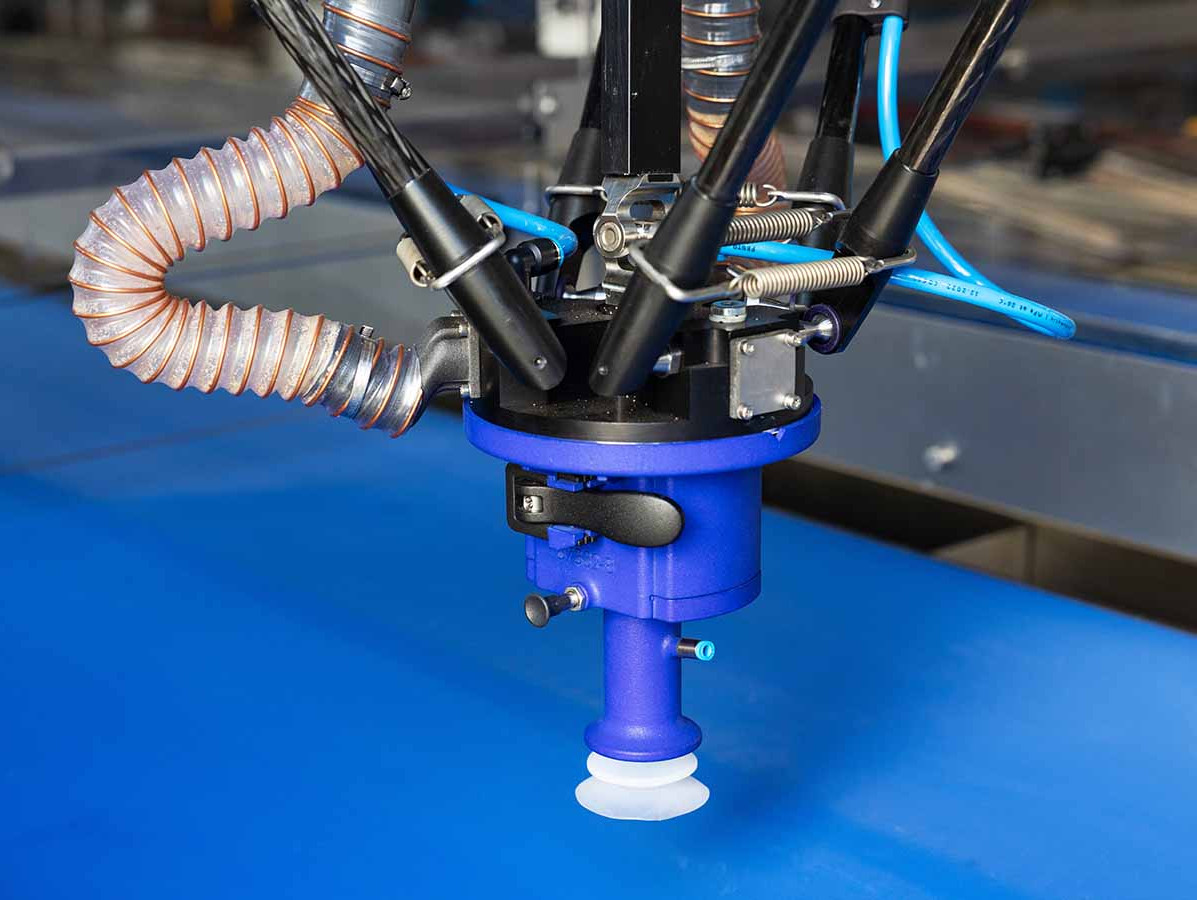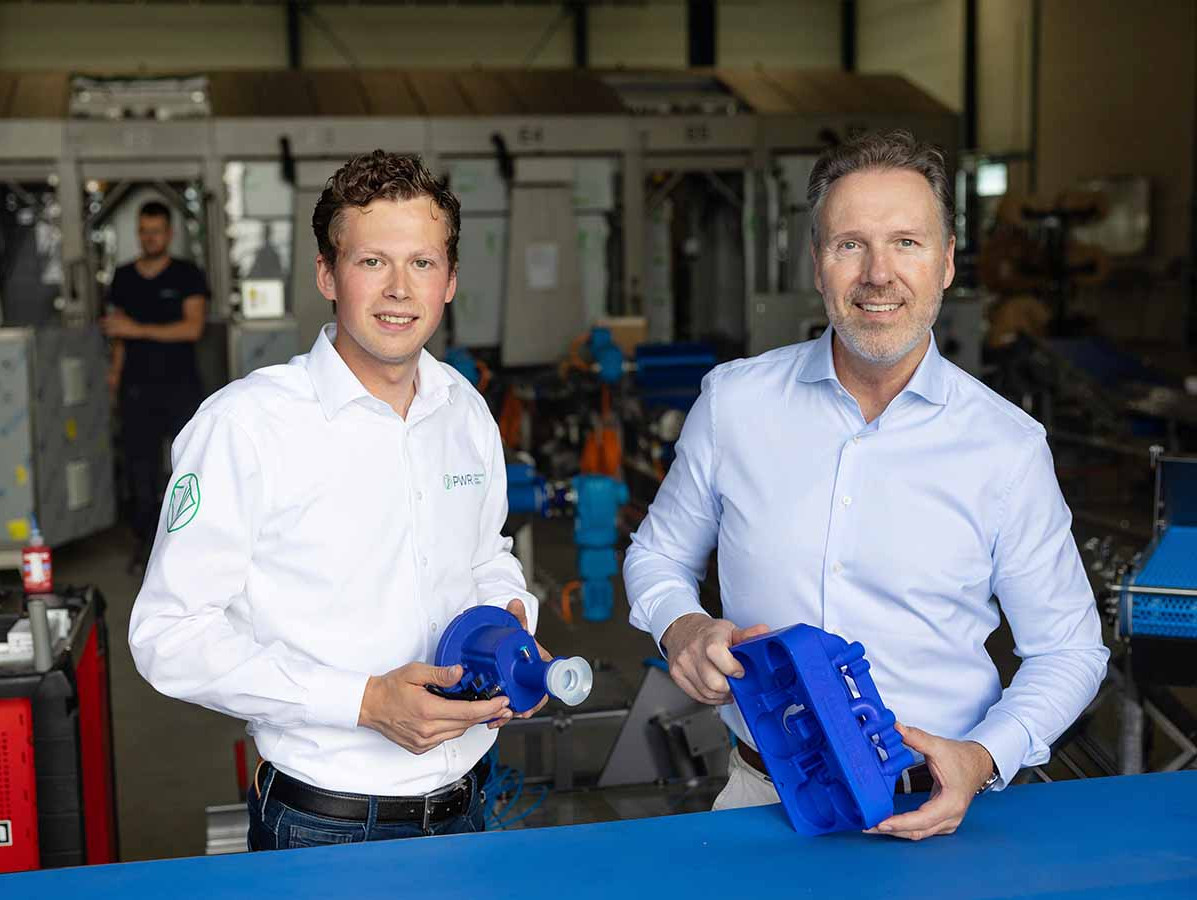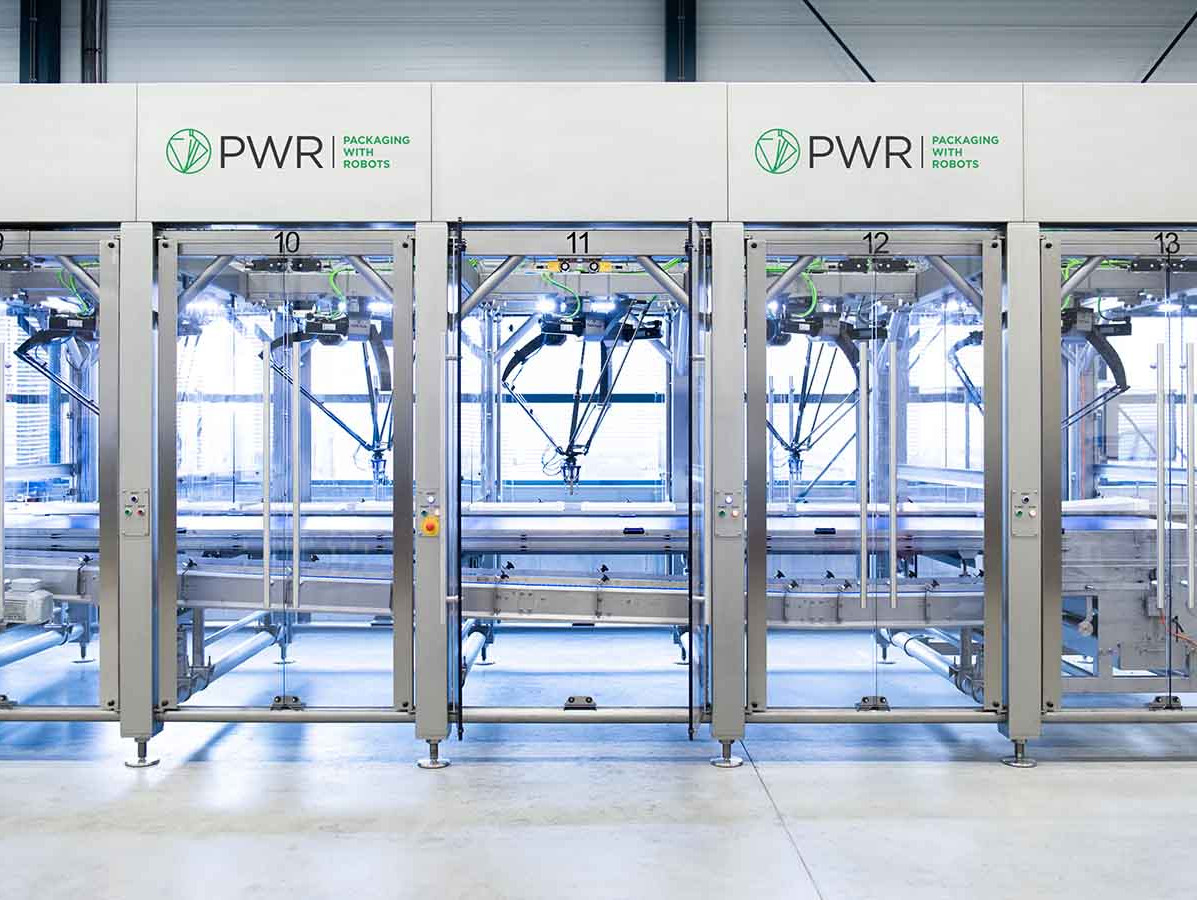
A gripper designed to move a pretzel is not necessarily suitable for picking up a cookie. Therefore, at PWR, different grippers need to be designed for each pick & place machine. 3D printing technology provides a solution.
“We are known as machine builders, but we are just as much a software company,” says Pieter Flikweert. He's a mechanical engineer at PWR, a developer of automatic packing machines for the food industry. Pieter is involved in designing unique robot solutions that are used end-of-line for pick & place. “Our robots pick up the finished product from the conveyor belt and transfer it to the packaging department. These are products that need to be packed dynamically when, for instance, the distribution on the production line is uneven. Think of chips, puff pastry products, and cookies. We use delta robots equipped with vision systems to detect the products and determine their best arrangement in the packaging. The software that drives these robots is crucial. By the end of the line, the packaging must be 100% filled. The grippers we design are unique for each project. After all, a gripper perfect for a pretzel might be useless for picking up a cookie.”

Pieter Flikweert (left) and Frank Elbersen
Pieter has seen PWR grow tremendously in the five years he's been employed there: “When I started, about thirty people worked here; now, it's around a hundred. The demand has increased significantly, partly due to the general trend of mechanization and the growing shortage of manpower. Our solutions replace manual labor, often involving repetitive tasks that aren't particularly popular.” Pieter notices that there's a growing emphasis on safety, both for employees and food safety, in mechanized processes. “The requirements are becoming stricter. Sometimes this means telling customers that we can't fulfill their wishes. We then demonstrate why; for example, the need to install a safety barrier. Fortunately, awareness is growing.”
One of the latest applications that could be very interesting for PWR in ensuring even greater food safety is 3D printed parts made from the new material, PA12 Blue MD by Parts On Demand. Pieter says, “We were among the first in our industry to embrace 3D printing technology. As we design specifically tailored solutions, this technology is ideal. Unlike traditional methods such as turning and milling, there are hardly any limitations; almost everything we design in our software can be printed, while adhering to food safety standards of course. We receive data sheets from Parts On Demand detailing the possibilities and limitations.” PWR typically has parts with unique features printed. “Like grippers, as well as adjustment mechanisms and internal channels. A major advantage is that the parts can be delivered quickly. We often also have prototypes 3D printed, enabling rapid testing of designs. And if a gripper needs replacing, we don't have to wait weeks for it.”

Frank Elbersen, from Parts On Demand, adds: “Our custom-made plastics are blue through and through. This color is rarely found in the food industry, making it visually detectable. The new PA12 Blue MD is now also metal- and X-ray detectable - a significant demand of the food industry. Industrial inline metal detectors identify contaminants on production lines and discard them. This allows manufacturers to benefit from compliance, reduced risk of product recalls, and less downtime. The applications are smoothly polished and resistant to moisture and microorganisms. They are manufactured in our factory under the strict conditions of the Good Manufacturing Practice method, ensuring traceability according to the EC2023/2006 regulation. We know exactly which printed part comes from which batch. Our plastics have been rigorously tested by various labs and are approved for contact with foodstuffs. Customers receive a Declaration of Conformity with every delivery, certifying our compliance with all European laws and regulations. A lot of expertise and craftsmanship went into the technology.”
'The new PA12 Blue MD is now also metal- and X-ray detectable.'
“While PWR is responsible for the design, the engineers at Parts On Demand always actively contribute,” Pieter remarks. He picks up a gripper to explain another advantage: “See, you can access and clean all parts; so they're also easily to clean.”
3D printing should become more commonplace in our industry, according to the mechanical engineer. “We sometimes sense some hesitation from our clients. They're mostly familiar with the technology from TV or perhaps personal experience, but those products are of an entirely different level. Our products demand new techniques and solutions. 3D printing is the perfect answer.”
www.pwrpack.com
www.partsondemand.eu
Photos: © Herbert Wiggerman
Source: Vakblad Voedingsindustrie 2023